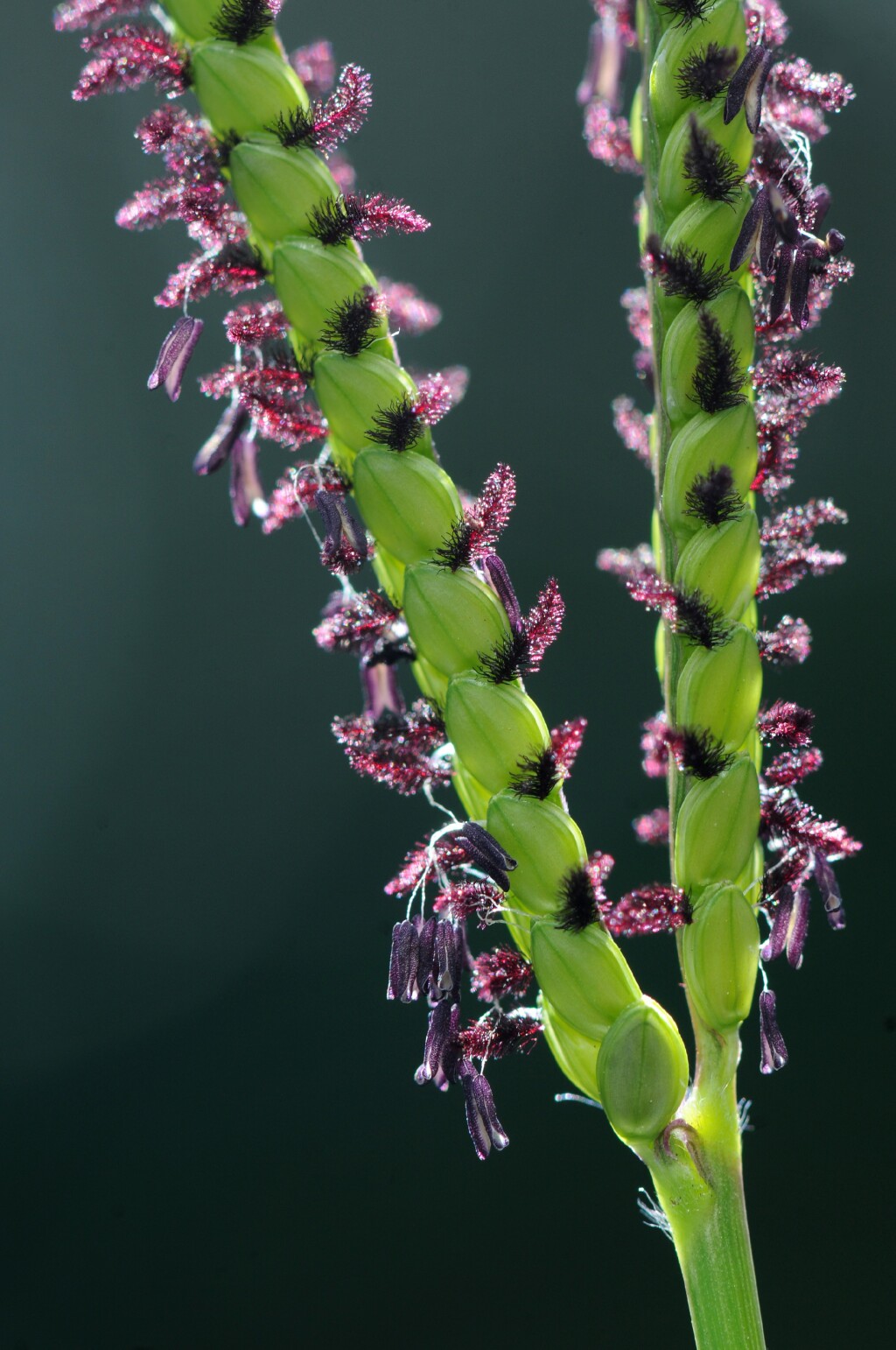Paspalum notatum
Flugge Bahia GrassRhizomatous perennial. Culms erect or geniculate, to c. 70 cm high; nodes glabrous. Leaf-blades flat, to c. 20 cm long and 10 mm wide, glabrous or the margins sparsely ciliate near the junction the sheaths, smooth or the margins very finely scabrous; sheaths glabrous; ligules ciliate, 0.3–1 mm long. Panicle 5–15 cm long, usually forked with of a pair of racemes to c. 10 cm long, occasionally 1–4 additional racemes present below the terminal pair. Spikelets green or purplish, elliptic, obtuse, 2.8–3.2 mm long, in 2 rows, each inserted at an angle of the regularly flexuous axis; lower glume not developed; upper glume 5-nerved, as long as spikelet, glabrous; lower lemma 5-nerved, equal to upper glume, glabrous; palea of lower floret absent; fertile lemma obtuse, as long as or very slightly shorter than spikelet, slightly rounded dorsally, pale, smooth to very finely striate. Flowers Mar.–May (4 records).
GipP, EGL. Recorded from Mordialloc, Briagolong, Mt Taylor area (north of Bairnsdale) and Mallacoota, on sandy ground.
Noted as invasive in a paddock near Mt Taylor and not grazed by stock. Paspalum notatum is sometimes treated as having distinct varieties, but it is difficulty to assign Victorian plants to any of the varieties with confidence.
Introduced into Australia as a pasture species, with several cultivars present. Naturalized in WA, NT, Qld, and NSW, also in many temperate and tropical countries. Native to Mexico and South America, but widely naturalised, particularly in the tropics.
 Spinning
Spinning

